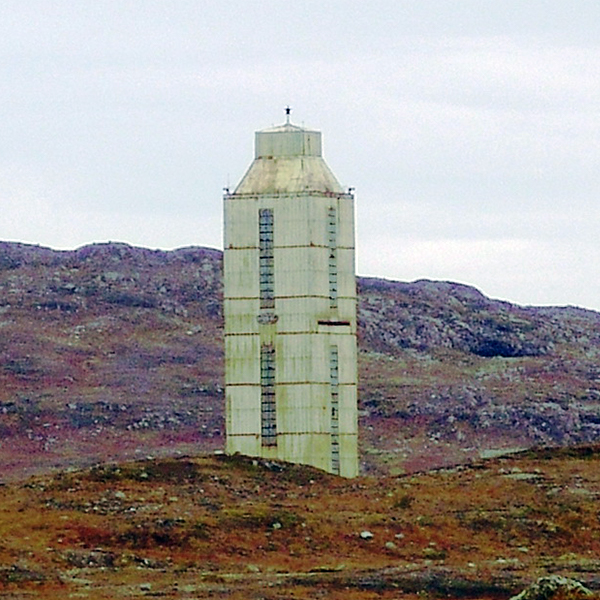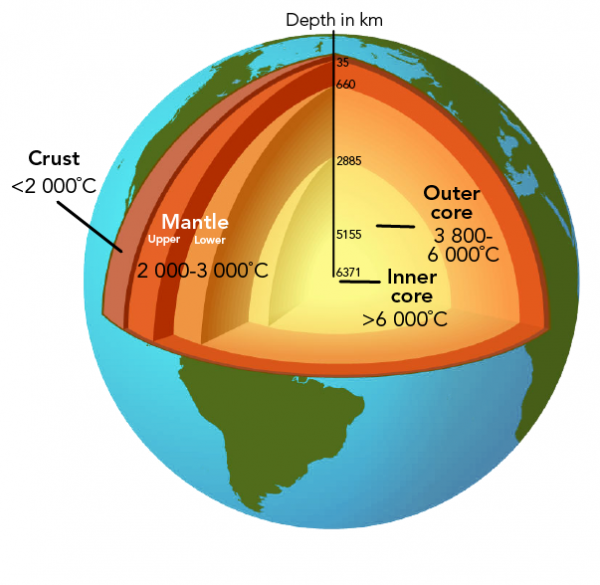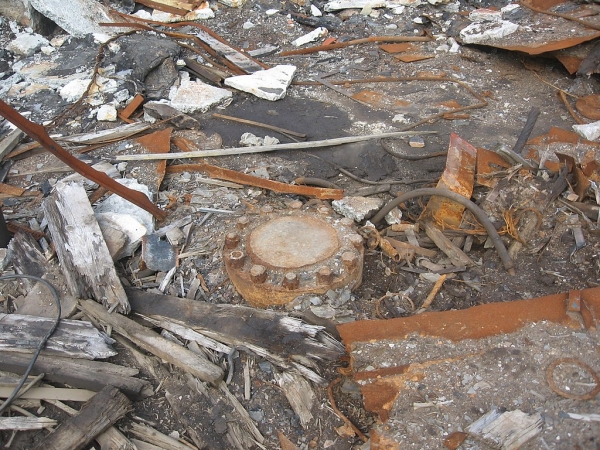The Deepest Hole in the World

Abandoned superstructure of Kola Superdeep borehole (Andre Belozeroff, Wikimedia Commons)

Abandoned superstructure of Kola Superdeep borehole (Andre Belozeroff, Wikimedia Commons)
Drilling into Earth’s Interior is no easy task. The Kola Superdeep Borehole is one of the projects that tried to do it.
Have you ever thought about what it takes to drill to the centre of the Earth? If you think it sounds difficult, you’re right! Not only has no one ever drilled to the centre of the Earth, no one has ever even managed to drill through the Earth’s crust. In fact, we know more about outer space than we do about what’s under the Earth’s surface!
We know that Earth has layers. The Earth is made up of a crust, mantle, and core. Both the mantle and core have inner and outer components.

Illustration - Text Version
Temperatures in the inner core are greater than 6 000 degrees Celsius. the temperature in the outer core ranges from 3 800 to 6 000 degrees Celsius. The temperature of the mantle ranges from 2 000 to 3 000 degrees Celsius and the temperature of the crust is less then 2 000 degrees Celsius.
The Earth’s crust is the thinnest layer. It ranges from about 5 to 70 kilometers thick. On average it’s about 40 kilometers thick. Consider 40 kilometers. That’s about 3 times the distance of the Confederation Bridge that connects Prince Edward Island and New Brunswick!
Did you know?
If the Earth were an apple, the crust would be equivalent to its skin!
Has anyone ever tried to dig through the Earth’s crust?
As a matter of fact, yes. During the 1970s, the Soviets gave it their best shot with the Kola Superdeep Borehole project on the Kola Peninsula. The project quietly took off during the Space Race between the Soviets and the Americans. The main goal was to find … well, whatever they could. They managed to dig to a depth of 12 262 metres. That’s just over 12 kilometres. Then, in 1992, the project came to a halt. But this depth is deeper than the deepest point in the ocean: the Mariana Trench, which is approximately 11 000 metres (or 11 km) deep.
How did they do it?
Boreholes are typically used in the oil and gas industry. But the Kola Superdeep Borehole was used in search of something else: information about the Earth’s crust.
To dig the Kola Superdeep Borehole, scientists invented a drill in which only the bit (the tip) rotated. They also had to use a lubricant to help the drilling process.The lubricant they used was pressurized drilling mud.
Did you know?
Although the Kola Superdeep Borehole went extremely deep under the Earth, it was only 23 centimetres (about 9 inches) wide!
Eventually, the project ended.The temperature of the rock at 12 kilometres deep was much higher than scientists thought it would be. They had prepared for temperatures close to 100 degrees Cecius. But the rocks were much closer to 180 degrees Celsius! They weren’t prepared for this extreme heat, so they had to stop digging. The borehole was capped.

What did they discover?
The Kola Superdeep Borehole led to a number of fascinating discoveries. For example, there is a lot of water underground! This discovery was one of the most important. Scientists believe that this water is actually trapped in the rocks that make up the Earth’s mantle and parts of the crust. They think it is trapped in the form of hydrogen and oxygen atoms. The drilling process released some of these trapped gas atoms, producing water.
Scientists also discovered microscopic plankton fossils at around 6.7 kilometers below the Earth’s surface! Twenty-four different species of ancient microplankton were catalogued during the project.
Did you know?
Rumours spread that the Kola Superdeep Borehole project ended because drillers hit a very hot, hollow cavity and heard the sound of “screams” escaping.
Have there been other super deep holes dug since then?
Several superdeep drilling projects followed the footsteps of the Kola Superdeep Borehole project. In the late 1980s, the German Continental Deep Drilling Program attempted to drill their own borehole. That project ended because of high temperatures, too. At depths of 9 100 metres, they reached temperatures close to 260 degrees Celsius!
Some projects have also attempted drilling through the Earth’s crust underwater. The Japanese drillship Chikyu is the most notable example. The ship is designed to operate in waters up to 2 500 metres deep. It is designed to drill a further 7 000 metres into the Earth’s crust. Its most recent expedition took place in 2009.

So what’s the point of all this digging? What do people expect to find? Perhaps that’s the answer to the question. They have no idea, and they are rushing to find out!
Starting Points
- What is the deepest hole you have ever dug? What was its purpose?
- Have you ever wondered what’s below the Earth’s crust? Explain.
- Have you ever been underground in a mine or well? What was it like?
- Have you ever seen rocks that have a curved or wavy structure? Where did you see these?
- Do you know anyone who is involved in mineral exploration/excavation? What do they do?
- Why do you think the bore hole in this video is called a “scientific and technological” achievement though they only went about 0.2% of the way to the middle of the Earth? Explain.
- How does pure scientific research, such as drilling this bore hole over the course of 25 years, benefit society? Explain.
- The movie The Core illustrates Earth’s interior from crust to core. It portrays an attempt to reach the inner core to fix our magnetic field. Do you think such a venture may be possible in our future? Why/why not?
- How can rocks on Earth’s surface be older than rocks below? Explain.
- What physical changes, chemical changes and changes of state do we encounter as we move through Earth from the crust to the core?
- How is it that solid rock can act like plastic?
- Using online resources, research technologies that have enhanced our knowledge of Earth’s interior during the last 100 years.
- How is the Kola borehole a good example of the limits of technology and science? Explain.
- Earth is quite large and as a result, it is very difficult to access areas below the crust. How has technology helped us to “see” beyond this physical limitation? Explain.
- Why was there was a difference between the theoretical and the actual temperatures of the interior of the Earth recorded?
- Do you think drilling a hole in the Earth and observing the rocks as you go deeper is a “scientific experiment”? Why/why not? Can drilling and examining borehole cores be considered a real “scientific experiment”? Why/why not?
- Do movies like The Core create unrealistic expectations of what science and scientists can do? Explain.
- Would you go to see a movie about the drilling of a hole that took 24 years? Why/why not?
- Why do you think most people have never heard of the Kola borehole experiment/site? Explain.
- This article can be used to support teaching and learning of Earth Science, and Earth materials and processes related to Earth’s interior. Concepts introduced include boreholes, bit and lubricant.
- Teachers could use this article and video to introduce students to a wide variety of topics such as, mining, mineral exploration and the layers of the Earth. In addition it could be used to show the limits of technology and science and how science and technology are related. It can also be used to broach issues of the Nature of Science. This could include how scientific knowledge is accumulated, how our scientific understanding can change over time or with new information, how scientific “experiments” are not the only way to develop scientific knowledge, etc.
- While watching the video, a Deep Viewing learning strategy could be used to help students focus on the different types of information contained in the video. Ready-to-use Deep Viewing reproducibles for this article are available for download in [Google doc] and [PDF] formats.
Connecting and Relating
- What is the deepest hole you have ever dug? What was its purpose?
- Have you ever wondered what’s below the Earth’s crust? Explain.
- Have you ever been underground in a mine or well? What was it like?
- Have you ever seen rocks that have a curved or wavy structure? Where did you see these?
- Do you know anyone who is involved in mineral exploration/excavation? What do they do?
Relating Science and Technology to Society and the Environment
- Why do you think the bore hole in this video is called a “scientific and technological” achievement though they only went about 0.2% of the way to the middle of the Earth? Explain.
- How does pure scientific research, such as drilling this bore hole over the course of 25 years, benefit society? Explain.
- The movie The Core illustrates Earth’s interior from crust to core. It portrays an attempt to reach the inner core to fix our magnetic field. Do you think such a venture may be possible in our future? Why/why not?
Exploring Concepts
- How can rocks on Earth’s surface be older than rocks below? Explain.
- What physical changes, chemical changes and changes of state do we encounter as we move through Earth from the crust to the core?
- How is it that solid rock can act like plastic?
- Using online resources, research technologies that have enhanced our knowledge of Earth’s interior during the last 100 years.
Nature of Science/Nature of Technology
- How is the Kola borehole a good example of the limits of technology and science? Explain.
- Earth is quite large and as a result, it is very difficult to access areas below the crust. How has technology helped us to “see” beyond this physical limitation? Explain.
- Why was there was a difference between the theoretical and the actual temperatures of the interior of the Earth recorded?
- Do you think drilling a hole in the Earth and observing the rocks as you go deeper is a “scientific experiment”? Why/why not? Can drilling and examining borehole cores be considered a real “scientific experiment”? Why/why not?
Media Literacy
- Do movies like The Core create unrealistic expectations of what science and scientists can do? Explain.
- Would you go to see a movie about the drilling of a hole that took 24 years? Why/why not?
- Why do you think most people have never heard of the Kola borehole experiment/site? Explain.
Teaching Suggestions
- This article can be used to support teaching and learning of Earth Science, and Earth materials and processes related to Earth’s interior. Concepts introduced include boreholes, bit and lubricant.
- Teachers could use this article and video to introduce students to a wide variety of topics such as, mining, mineral exploration and the layers of the Earth. In addition it could be used to show the limits of technology and science and how science and technology are related. It can also be used to broach issues of the Nature of Science. This could include how scientific knowledge is accumulated, how our scientific understanding can change over time or with new information, how scientific “experiments” are not the only way to develop scientific knowledge, etc.
- While watching the video, a Deep Viewing learning strategy could be used to help students focus on the different types of information contained in the video. Ready-to-use Deep Viewing reproducibles for this article are available for download in [Google doc] and [PDF] formats.
Learn more
“Travel” information from Atlas Obscura about the Kola Superdeep Borehole; the article includes a brief history, photos, and tips for finding the borehole if you wish to visit.
Drilling to the Mantle: 6 Unexpected Discoveries from the World’s Deepest Well (2019)
Article from ZME Science by Ron Miksha listing some of the unexpected findings during the drilling of the Kola Superdeep Borehole from water to fossils to “Hell”.
References
Andrei, M. (2018, August 21). What are the layers of the Earth? ZME Science.
Ault, A. (2015, February 19). Ask Smithsonian: What’s the deepest hole ever dug? The Smithsonian Institute.
McFadden, C. (2019, March 29th). The real journey to the center of the Earth: the Kola superdeep borehole. Interesting Engineering.
Ship Technology. (n.d.). Chikyu – Scientific drillship.